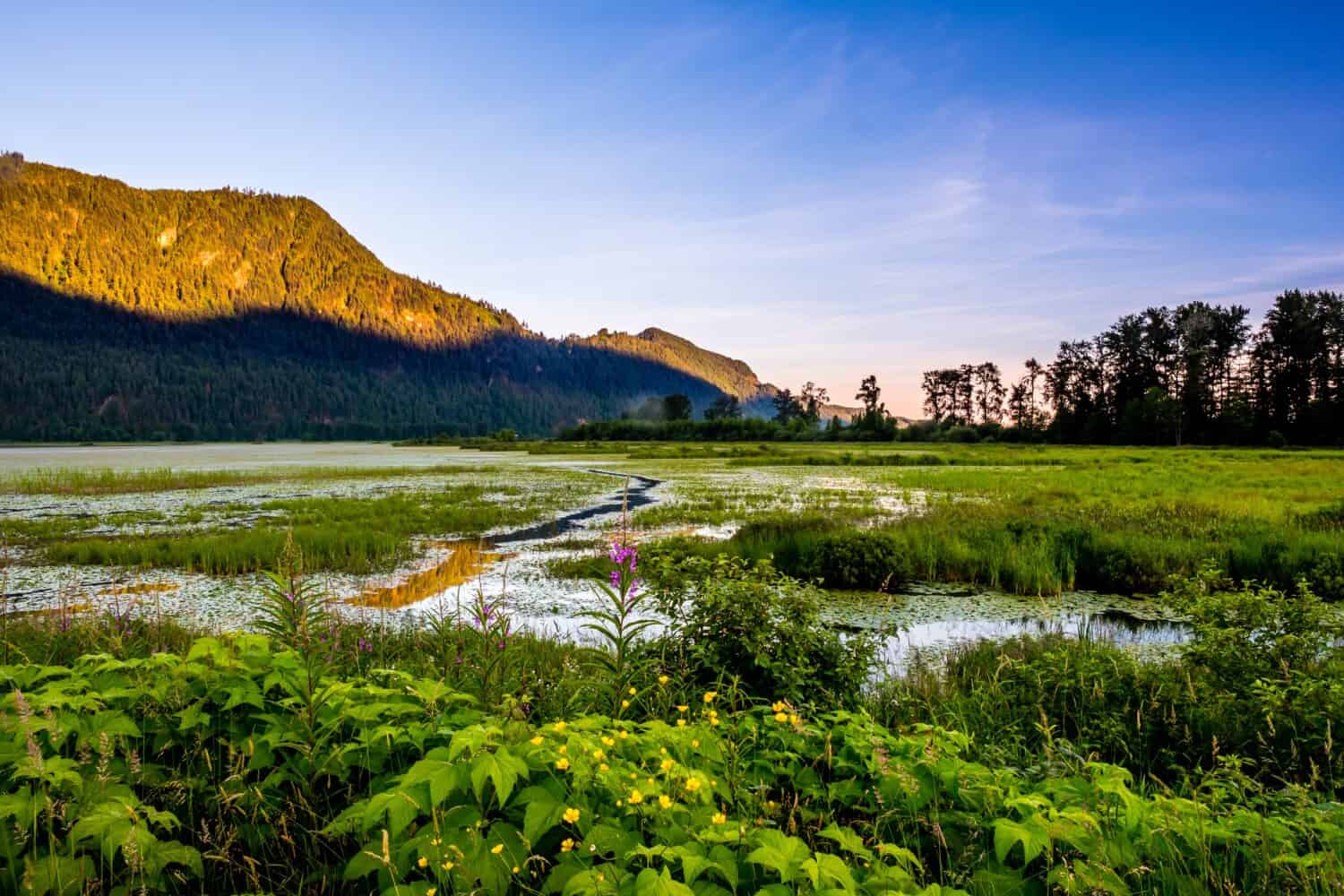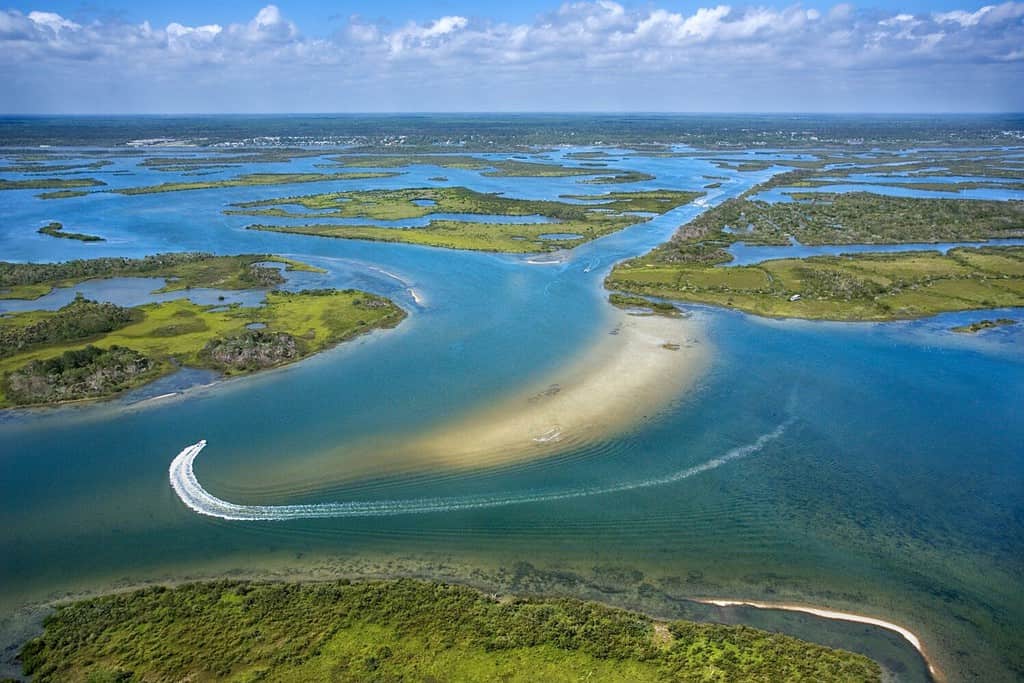
Wetlands, swamps, and marshes are found all over the world and are often confused with one another. Make sure you understand what to look for when you see a wetland vs. marsh vs. swamp.
©Vibe Images/Shutterstock.com
Have you heard the terms “wetland“, “marsh“, and “swamp” used but you’re not quite sure of the differences between these three? When you look, seeing the comparisons of a wetland vs. marsh vs. swamp isn’t easy. They are easily confused with one another until you know what to look for.
This article is here to break down the differences between the three so you know exactly what each one is, where they are found, and how to tell them apart. By the end of the article, you’ll be an expert in identifying each water type.
What Is a Wetland?
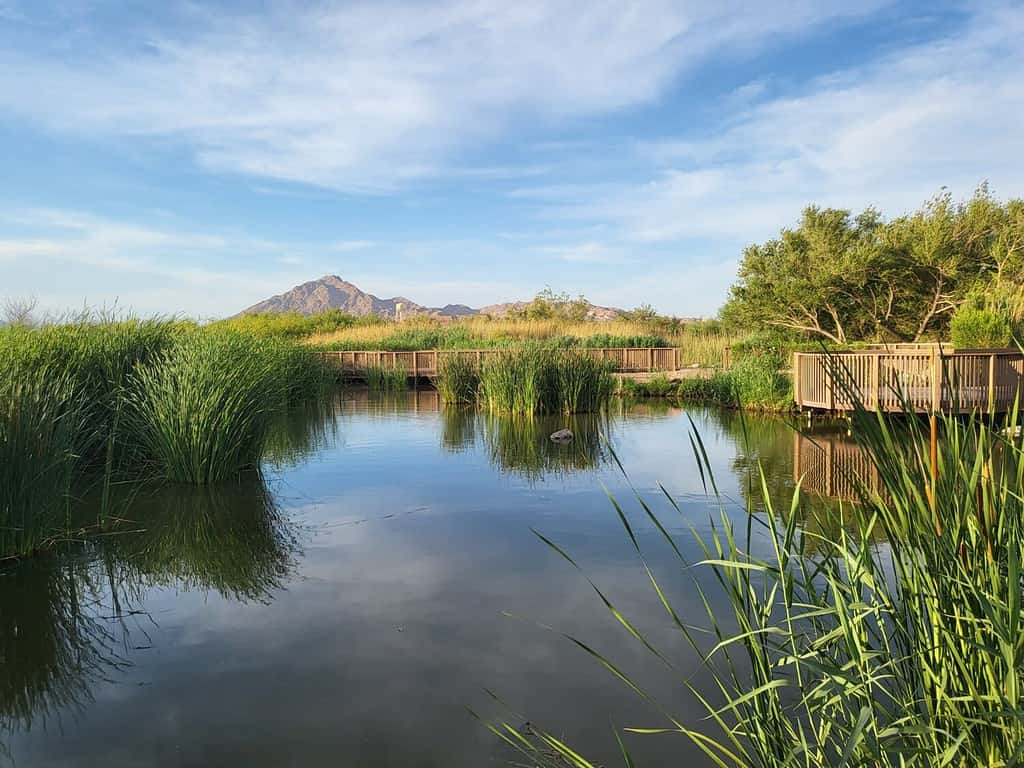
Wetlands can be found all over the world.
©B-lth-z-r/Shutterstock.com
The term wetland is an overarching definition. It includes swamps, marshes, and bogs. A wetland encompasses anywhere water covers the soil. It also includes some areas where you might not see the water, but it sits just below the soil.
Wetlands don’t have to stay wet throughout the year. Even places that are mostly dry throughout the year are called wetlands sometimes. There just has to be water in the area for some part of the year.
Wetlands may be inland or along the coast. The amount of salinity in the water also doesn’t matter. There are usually plants of some sort in the area, a mix of aquatic and terrestrial plants, but there are exceptions to this rule.
Wetlands are usually found on floodplains. Glaciers and forces of nature also create wetlands when rivers are dammed or natural depressions form in rocks and the earth.
People also make wetlands. There are times when they are made on purpose, to provide habitat for animals and plants. However, there are also times it’s done accidentally, such as when people reroute rivers to build homes or streets. When people change the path water takes, wetlands can occur in unexpected places.
Chesapeake Bay watershed, the Merced National Wildlife Refuge, and Death Valley National Park are all considered wetlands.
What Is a Marsh?
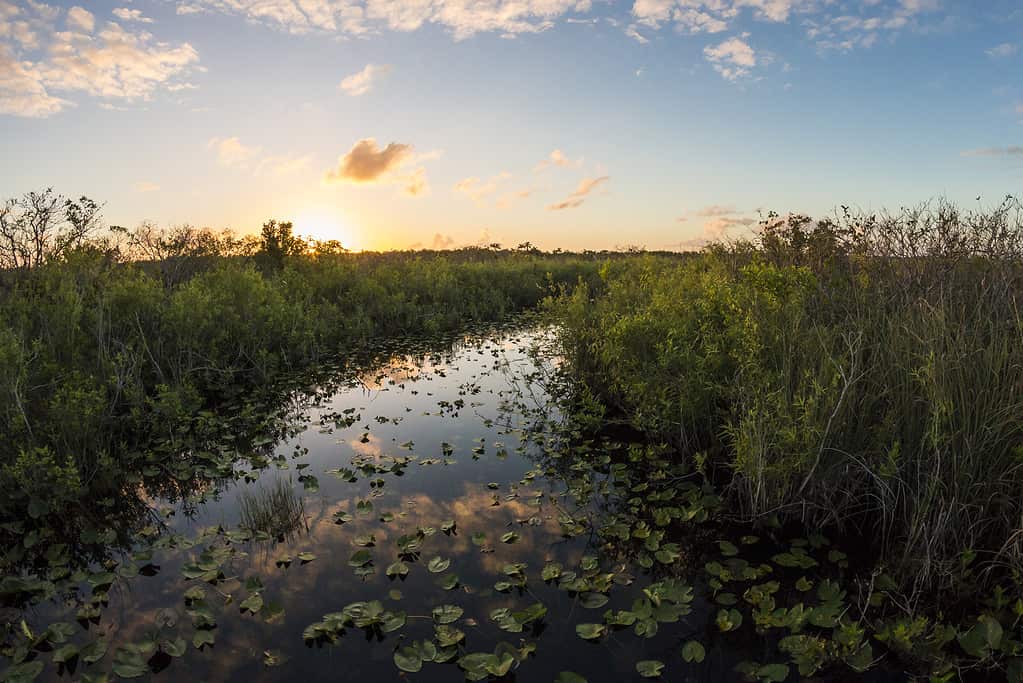
The Everglades in Florida is a good example of a marsh.
©BlueBarronPhoto/iStock via Getty Images
As established above, a marsh is a type of wetland. They are usually characterized by soil that doesn’t drain well. The soils are often also usually high in minerals.
Another characteristic of marshes is the type of plants that make it up. Usually, grasses are the dominant plant life in a marsh. This is because marshes tend to form when flat areas full of grass flood.
Grasses and other low-level plants have a habit of slowing water down inside marshes. They’ll dig into the mud at the bottom to stay rooted, while their branches and stems deal with the moving water. With enough plants in the area, the water will slow down and turn sluggish.
Marshes are usually categorized by their salinity. There are freshwater and saltwater marshes.
The Everglades in Florida is actually a type of marsh. Many people assume it’s a swamp, but that’s incorrect. There are two famous marshes in Kansas as well, the Cheyenne Bottoms and the Quivira National Wildlife Refuge salt marshes. The largest marsh in the United States is the Horicon Marsh in Wisconsin.
What Is a Swamp?

Swamps should have lots of trees nearby and the water is usually deep enough to at least use a kayak.
©Joanne Dale/Shutterstock.com
A swamp is a little different than most other wetlands. Instead of water that can come and go depending on the season or water quality, swamps keep water in them throughout the year and in most conditions except for extreme drought.
Swamps are always in forested areas. They are often confused with lowland forests. The main difference between them and lowland forests is that swamps often have more water. Usually, the water is deep as well, deep enough that you can use a boat to get through most of them.
Swamps are classified based on the trees in the area. The water-tolerant trees like cypress and mangroves determine what kind of swamp it is.
Since there’s permanent water in the area, there are plenty of aquatic animals that live in the water. There are also plenty of animals that live on the edges of the swamp and in the trees. Because there are so many trees, you tend to get some animals that you wouldn’t find in marshes, like certain types of birds or squirrels.
Honey Island Swamp, Atchafalaya National Wildlife Refuge, and Okefenokee Swamp are all examples of swamps. Interestingly, swamps tend to have their title in their name most often, so you will often see “swamp” at the end of a body of water that is classified as a swamp.
Key Differences Between These Bodies of Water
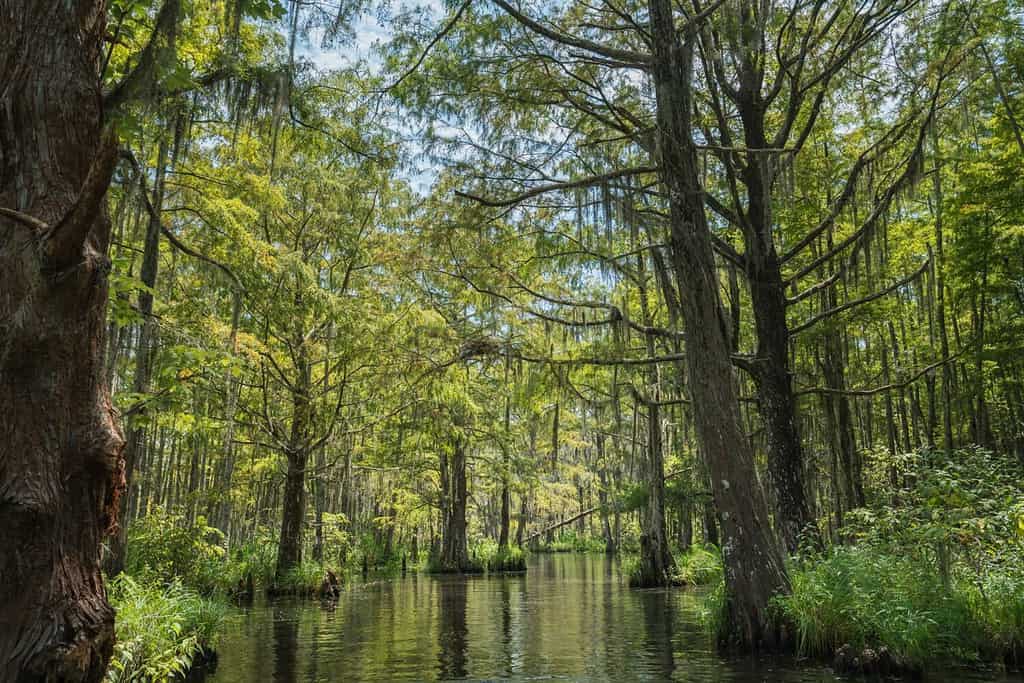
Can you tell which body of water this is? It’s both a wetland and a swamp.
©Colin Beresford Godfrey/Shutterstock.com
Now that you know what each type of water is, it’s time to learn the easy ways to tell them apart.
The Plants Required
Marshes tend to have mostly grass. Because they form in open areas, grass, shrubs, and flowers tend to be the most prominent plants in the area. For marshes that stay wet longer, there may also be an abundance of aquatic plants. There may be trees, but they aren’t a requirement and there usually aren’t very many.
Swamps, on the other hand, are dominated by trees. There may be other plants in the area, but towering, water-loving trees are the primary flora. Since swamps stay wet all the time, they will also have a lot of aquatic vegetation. Generally, the water is too deep to be home to most grasses and shrubs, though there may be some on the outskirts and in the shallower water.
Wetlands can have any kind of plants. There are usually aquatic plants since there is water on the surface or just under the soil. So even if you don’t see water, you will see water-loving plants to signal that a wetland is nearby.
The Soil Type
When looking at comparing wetland vs. marsh. vs. swamp, soil is another way to tell them apart. Marshes tend to be more muddy and thick. They contain sand and silt which means the soil under the water is often gunky, slippery, and heavy. There are also a few different minerals in the water.
Swamps, on the other hand, tend to feature a better drainage system. The soil is often made of silt and loam. It still holds water, but not as much as a marsh would. Often, the bottom doesn’t feel as thick or gunky as a marsh either.
Wetlands have pretty much any soil. They can be gunky and poor-draining, or sandy and well-draining. They may also just be regular dirt, depending on what’s in the area.
The Water Levels and Changes
Another main difference is how the water levels change. Marshes don’t have to be wet throughout the year, and they may undergo dry spells throughout several seasons a year.
Swamps, unless facing extreme drought or are starting to dry out, keep water in them all year long. Wetlands may have water in or under them throughout the whole year, just one season a year, or anywhere in between.
Summary of the Comparisons and Differences Between Wetlands, Marshes, and Swamps
The differences above are the key differences and the easiest way to tell a wetland vs. marsh vs. swamp apart. However, there are some other comparisons worth looking at. This table quickly summarizes some important similarities and differences between these three types of water bodies.
| Key Differences | Wetlands | Marshes | Swamps |
|---|---|---|---|
| Presence of Trees | Can have trees, but not required | Not required | Must have trees, type of swamp characterized by tree species |
| Soil Type | Can be any kind of soil | Poor draining, silt and clay. | Usually loamy, sandy soil. Well-draining. |
| Plants in Area | Grasses, shrubs water lilies, flowers, trees, and more | Grasses, shrubs alongside perimeter | Trees and shrubs, a few aquatic plants and grasses |
| Animals in Area | All sorts of aquatic insects, fish, frogs, birds, mammals, alligators | Fish, frogs, snakes, turtles, waterfowl, birds, and mammals | Deer, hare, alligators, bobcats, beavers, and raccoons, |
| Water Fluctuations | Water may be in area permanently, or one season a year | May be subject to flooding or drought. Lots of fluctuation | Similar to lowland forests, though wetter permanently. Water is fairly deep |
| Location | Between water and land, found almost anywhere | Near lakes and rivers, occasionally along the coast. | Found inland and along the coast near forests, specifically lowland forests. |
Thank you for reading! Have some feedback for us? Contact the AZ Animals editorial team.

